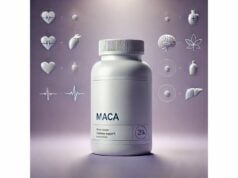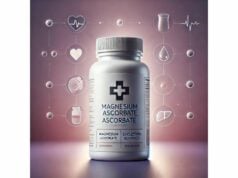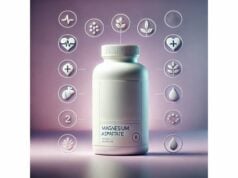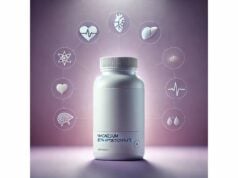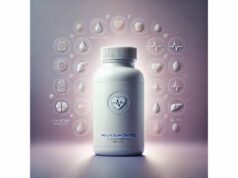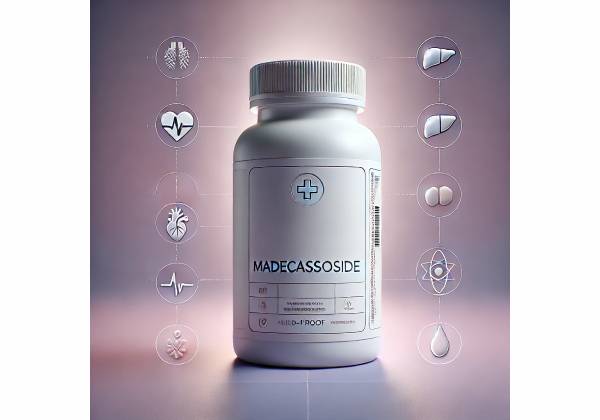
Madecassoside is a pentacyclic triterpene saponin found in Centella asiatica (also called gotu kola or cica). In modern skincare, it is prized for calming redness, supporting wound repair, and helping photoaged skin look and feel healthier. Behind those claims is a compound that moderates inflammatory pathways, supports collagen organization, and helps the skin barrier hold moisture. You’ll most often see madecassoside in leave-on serums, moisturizers, and post-procedure creams; it also appears in some oral Centella extracts formulated for venous circulation. Results are not overnight. Most users notice softer, less reactive skin within 2–4 weeks, while visible changes in texture and fine lines typically need 8–12 weeks of steady use. If you’re scanning an INCI list that says “cica,” check whether the label discloses madecassoside specifically and—ideally—its concentration. This guide explains what madecassoside is, how it works, where it helps most, how to use it correctly (including dose ranges), who should avoid it, and how the evidence looks today.
Fast Facts
- Helps calm redness and supports wound repair and photoaged skin over 8–12 weeks.
- Generally well tolerated; rare cases of allergy or, with oral Centella, liver injury have been reported.
- Typical topical range: 0.05–0.3% once or twice daily; oral Centella extracts: 60–120 mg/day.
- Avoid during pregnancy or breastfeeding, in active liver disease, or with known allergy to Centella components.
Table of Contents
- What is madecassoside and how it works
- Proven skin benefits and what to expect
- How to use madecassoside: dosage and forms
- Product choices and common mistakes
- Who should avoid madecassoside and side effects
- What does the evidence show today
What is madecassoside and how it works
Madecassoside, in brief. Madecassoside is one of Centella asiatica’s signature triterpenes, alongside asiaticoside, asiatic acid, and madecassic acid. Chemically, madecassoside is a glycoside (a sugar-linked molecule). On the skin and in the gut, enzymes can trim those sugars and convert madecassoside to madecassic acid—another active in the same family. This is why labels and papers often discuss “Centella triterpenes” as a group: they interconvert and tend to act along the same biological lines.
Key mechanisms that matter for skin:
- Anti-inflammatory signaling: Madecassoside dampens inflammatory cascades (for example, NF-κB–related pathways), reducing cytokines that drive redness and irritation.
- Collagen and extracellular matrix support: It influences fibroblast activity and helps organize the dermal matrix—important for firmness and wrinkle depth over time.
- Barrier function: By improving intercellular signaling and lipid balance, madecassoside helps the stratum corneum hold water more effectively. The practical payoff is less transepidermal water loss, fewer rough patches, and better tolerance to active routines.
- Wound repair: In the context of micro-injury (e.g., after lasers or peels), madecassoside supports re-epithelialization, angiogenesis, and balanced remodeling—three steps that help skin recover with fewer setbacks.
- Photoprotection (supportive, not a sunscreen): Madecassoside helps limit UV-induced oxidative stress in keratinocytes. It does not replace SPF, but as part of a routine, it can support skin that is repairing from chronic sun exposure.
Topical vs. oral context. Topically, madecassoside is delivered directly to the tissue where it works. Orally, it typically arrives as part of standardized Centella extracts used for microcirculation and venous symptoms. Oral and topical effects partially overlap (e.g., on collagen and inflammation), but topical use is the primary route for cosmetic and post-procedure goals.
Expectation setting. Madecassoside is not a retinoid, acid, or vitamin C booster; it will not “peel” or brighten overnight. Think of it as a smart stabilizer for the skin environment—reducing noise from inflammation and helping structure come back into line—so other evidence-based actives can do their jobs with less irritation.
Proven skin benefits and what to expect
Photoaging (texture, fine lines, firmness). Split-face, double-blind work using a cream containing 0.1% madecassoside with 5% vitamin C over 6 months reported improvements in wrinkles, firmness, and hydration, with histologic signs of a healthier elastic fiber network. The pairing makes sense physiologically: vitamin C supports collagen synthesis, while madecassoside calms inflammatory “noise” and supports matrix remodeling. For consumers, this translates to smoother feel and better spring when formulas are used consistently alongside daily sunscreen.
Wound healing and post-procedure recovery. In clinical settings ranging from everyday epidermal wounds to post-laser care, madecassoside-containing creams have helped shorten recovery windows and reduce irritant symptoms compared with placebo or standard emollients. In a split-face trial after fractional resurfacing, a cream with madecassoside plus panthenol and trace elements reduced downtime markers (erythema, discomfort) across 1–2 weeks, a meaningful window for people trying to get back to work or reduce makeup dependence after procedures.
Barrier support in reactive skin. Madecassoside-rich products are commonly used in “rescue” routines to stabilize the skin barrier after over-exfoliation or during retinoid initiation. Improvements in dryness, visible flaking, and stinging typically appear by week 2–4, especially when the product includes humectants (e.g., glycerin or hyaluronic acid) and occlusives (e.g., squalane).
Redness-prone conditions. Although madecassoside is not a prescription therapy for rosacea or dermatitis, its calming effect on inflammatory pathways can reduce the “background irritation” that keeps those conditions flaring. For acne-prone users, it’s best framed as a tolerance aid—reducing irritation from benzoyl peroxide or retinoids—rather than a primary acne treatment.
Pigment-adjacent support. As part of a routine that includes daily sunscreen and, when appropriate, retinoids or azelaic acid, madecassoside’s anti-inflammatory action may help lower the risk of post-inflammatory hyperpigmentation after procedures or breakouts. It’s not a depigmenting agent on its own; consider it one component in a broader plan.
Timeframes and magnitudes.
- Comfort and hydration: 1–2 weeks.
- Texture, fine lines, firmness: 8–12 weeks, longer if sun damage is significant.
- Post-procedure recovery: improvements often noted within days when used as directed by a clinician.
Who benefits most. People building tolerance to retinoids; post-procedure patients guided by a dermatologist; those with photoaged, easily flushed, or combination skin; and anyone looking to make an active routine more comfortable and sustainable.
How to use madecassoside: dosage and forms
Topical concentrations and formats.
- Everyday care: look for 0.05–0.1% madecassoside in serums or moisturizers. This is enough for barrier support and day-to-day calming without heaviness.
- Post-procedure or targeted repair: products may use 0.1–0.3% and bundle madecassoside with panthenol, copper/zinc/manganese, or hyaluronic acid. Follow your clinician’s schedule after lasers, microneedling, or peels.
- Leave-on vs. rinse-off: prioritize leave-on formulas; rinse-offs don’t provide enough contact time to matter.
Layering order (AM/PM).
- Cleanser (gentle, low-foam).
- Water-based actives (vitamin C or niacinamide in the morning; exfoliating acids only if skin tolerates).
- Madecassoside serum or moisturizer.
- Occlusive or oil (optional, PM).
- Sunscreen every morning (broad spectrum SPF 30+).
Frequency. Start once daily, then increase to twice daily if needed. For retinoid users, apply madecassoside before or after the retinoid depending on texture: thinner serums first, then creams.
Patch testing. Even “soothing” ingredients can cause reactions in a sensitive minority. Apply a rice-grain amount to the inner forearm or behind the ear for 2–3 nights before first facial use.
Oral use (when appropriate). Oral madecassoside is not sold as an isolated supplement in most markets; instead, it appears within standardized Centella extracts. Typical oral ranges are 60–120 mg/day of purified Centella extract (capsule or tablet), taken with food for 4–8 weeks before judging effect. These products are used chiefly for venous symptoms (heaviness, ankle swelling) rather than skincare goals. If you have liver conditions, are on multiple medications, or are pregnant/breastfeeding, discuss oral Centella with your clinician first.
How long to try.
- Cosmetic goals (texture, calm): commit to 8–12 weeks of consistent use.
- Post-procedure: follow the protocol provided (often 1–2 weeks of focused use, then taper).
- Venous support (oral): 4–8 weeks, then reassess with your clinician.
What to combine—or avoid.
- Good company: vitamin C (AM), retinoids (PM), niacinamide, hyaluronic acid, panthenol, ceramides, cholesterol.
- Use caution with: high-strength acids (AHA/BHA/PHA) more than 2–3 times per week if you’re in barrier repair mode.
- Do not substitute for SPF: madecassoside supports recovery; sunscreen prevents the damage that needs repairing.
Storage. Keep caps tightly closed; avoid heat and direct sun. Many “cica” formulas are water-based and are best used within 6–12 months of opening.
Product choices and common mistakes
How to read labels. “Cica” has become a marketing umbrella for many Centella derivatives. If your goal is the specific benefits outlined here, favor products that name madecassoside in the ingredient list and, when possible, disclose a percentage. If no percentage is listed, check for placement in the INCI order: higher on the list usually indicates more, though exact amounts remain unknown.
Quality signals to look for.
- Concentration or standardization: e.g., “0.1% madecassoside,” or a standardized Centella extract that specifies total triterpenes.
- Supportive base: humectants (glycerin, hyaluronic acid), emollients (squalane), and barrier lipids (ceramides, cholesterol).
- Post-procedure claims with clinician guidance: if you are using it after lasers or peels, preference goes to brands and clinics that provide clear, written protocols.
- Packaging: air-tight pumps or tubes reduce contamination and oxidation better than wide-mouth jars.
Common mistakes (and fixes).
- Chasing “cica” without actives: a product can market “cica” but contain trace amounts of Centella. Fix: seek disclosed madecassoside percentages or a trusted brand with clinical testing.
- Expecting overnight brightening: madecassoside helps your skin recover; use proven brighteners (retinoids, azelaic acid) plus SPF for pigment.
- Using only post-procedure: it shines after procedures, but daily use maintains barrier health and reduces future downtime.
- Skipping sunscreen: improvements plateau if UV damage continues unchecked.
- Over-layering strong actives: if your barrier is compromised, pause daily acids and simplify until comfort returns.
- Ignoring patch tests: rare contact dermatitis occurs; test first—especially if you have a history of botanical allergies.
- Confusing oral and topical goals: oral Centella is for venous symptoms; it is not a shortcut to wrinkle care.
Cost vs. value. A mid-priced, fragrance-free cream with 0.1% madecassoside can outperform a luxury jar that doesn’t disclose concentration. Consistency and overall routine matter more than brand prestige.
Who should avoid madecassoside and side effects
Typical tolerability. Topical madecassoside is well tolerated for most people. The most common reactions are mild and short-lived: transient tingling on application, a brief warmth, or a small bump in breakouts when a richer cream is used on oily areas. Reducing frequency or switching to a lighter vehicle usually solves it.
Allergy and contact dermatitis. Though uncommon, sensitization to Centella derivatives can occur. Signs include persistent itching, burning, or a new, scaly rash at the application site. Stop the product and see a clinician for evaluation and patch testing.
Oral safety notes. Purified Centella extracts used for venous symptoms are generally tolerated at 60–120 mg/day. However, rare cases of clinically apparent liver injury have been reported with oral Centella products. The risk appears low but real, and confounders like contamination cannot always be excluded. If you choose oral products, avoid alcohol excess, monitor for jaundice, dark urine, or right-upper-quadrant pain, and stop immediately if symptoms appear.
Who should avoid or seek medical clearance first.
- Pregnant or breastfeeding individuals: safety data are insufficient; avoid unless your clinician approves.
- Active or chronic liver disease: avoid oral Centella; use topical only with clinician input.
- Known allergy to Centella constituents or previous reactions to “cica” products.
- Open, deep, or infected wounds: follow medical guidance; do not self-treat with cosmetics.
Medication and routine considerations.
- Topical with retinoids/benzoyl peroxide: compatible; introduce gradually to minimize layering-related irritation.
- Systemic medications: no major drug–drug signals with topical use; oral extracts should be discussed with a clinician if you take hepatotoxic drugs or have complex polypharmacy.
- Procedures: many clinicians use madecassoside post-laser or microneedling; follow the exact schedule provided (frequency, when to resume actives, when to reintroduce sunscreen).
When to stop and seek care. New widespread rash, facial swelling, wheeze, hives, persistent burning, yellowing of the skin or eyes, dark urine, or severe abdominal pain.
Bottom line. For most users, topical madecassoside provides a high benefit-to-risk ratio—especially in barrier support and post-procedure comfort. Oral Centella may help venous symptoms but deserves a medical conversation first.
What does the evidence show today
Clinical signals with topical use. Randomized, double-blind human work supports madecassoside’s contribution to photoaging improvement when combined with vitamin C over 6 months. Split-face, randomized studies after laser resurfacing show that madecassoside-containing creams (often with panthenol and trace elements) can speed recovery and reduce discomfort in the first 1–2 weeks. Outside procedures, day-to-day barrier support and comfort improvements are frequently reported and consistent with the compound’s mechanisms.
Mechanistic depth. Modern reviews catalog how Centella triterpenes—including madecassoside—modulate NF-κB and related inflammatory mediators, support fibroblast function, and counter oxidative stress from UV exposure. These mechanisms map directly to the clinical changes users care about: less redness and tightness early; smoother texture and improved firmness later.
Safety profile. Cosmetic safety assessments conclude that Centella-derived ingredients (including madecassoside) are safe when formulated to be non-sensitizing. For oral products, rare hepatotoxicity has been described; guidance favors prudent dosing, careful product selection, and discontinuation at the first sign of liver-related symptoms. Topical allergy remains uncommon but real; patch testing is sensible for very sensitive users.
Where evidence is still thin.
- Isolated madecassoside vs. whole Centella. Many trials use combinations (e.g., with vitamin C or panthenol), making it hard to assign credit precisely.
- Dose–response curves. We have clinically used concentrations (0.05–0.3%), but head-to-head trials comparing concentrations in the same base are limited.
- Long-term monotherapy data. Most real-world routines stack actives; pragmatic, longer trials would help isolate added value over a year or more.
Practical takeaway for users. If you need a calming, barrier-friendly anchor for an active routine—or a post-procedure ally—madecassoside is a strong candidate. Choose formulas in the 0.05–0.1% range for daily use, 0.1–0.3% for recovery phases, pair with daily SPF 30+, and give your skin 8–12 weeks to show its best work.
References
- Clinical, biometric and structural evaluation of the long-term effects of a topical treatment with ascorbic acid and madecassoside in photoaged human skin (2008)
- Effects of a cream containing madecassoside, 5% panthenol, and copper-zinc-manganese on improving postlaser resurfacing wound healing: A split-face, randomized trial (2020)
- Safety Assessment of Centella asiatica-Derived Ingredients as Used in Cosmetics (2023)
- Centella asiatica – LiverTox – NCBI Bookshelf (2024)
- Pharmacological Effects of Centella asiatica on Skin Diseases: Evidence and Possible Mechanisms (2021)
Disclaimer
This article is for educational purposes and does not replace personalized medical advice, diagnosis, or treatment. Always consult a qualified healthcare professional before starting, stopping, or combining supplements or skincare actives—especially if you are pregnant or breastfeeding, have liver disease, or manage chronic skin or venous conditions. If you experience signs of an allergic reaction or liver problems, stop use and seek medical care.
If this guide helped you, consider sharing it on Facebook, X (formerly Twitter), or your preferred platform, and follow us for future evidence-based articles. Your support helps us continue creating high-quality resources.


